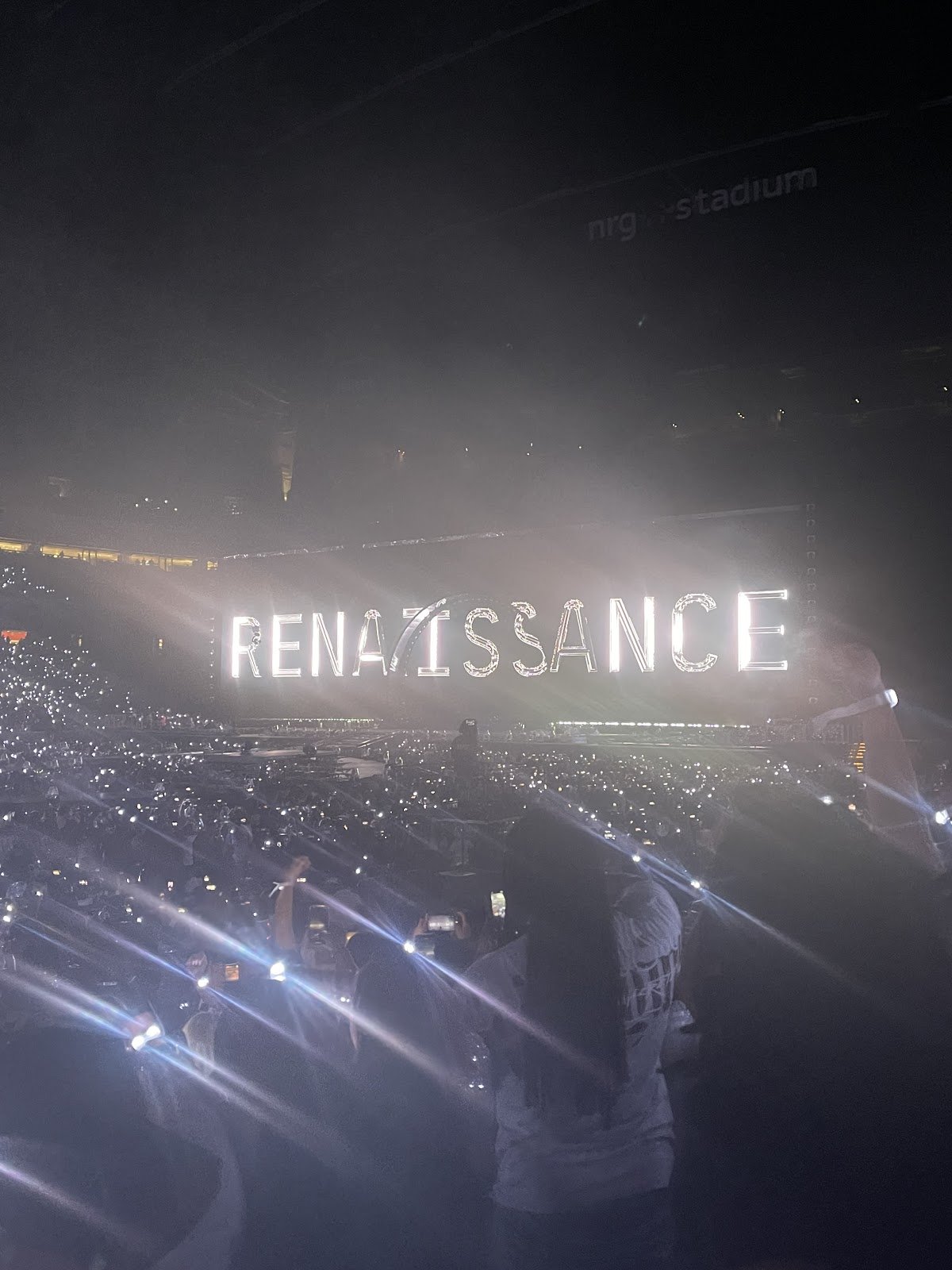“Renaissance”: The Cross-Generational Impact of Beyonce’s “Renaissance” Album and World Tour
Image Courtesy: Image Courtesy of Madison Brown
“Please motherf***ers ain’t stopping me,” repeats on loop in the backdrop of “I’M THAT GIRL,” the opening track of “Renaissance.” Beyonce’s unapologetic statement sets the tone of self-liberation for the 15 remaining songs comprising “Renaissance.” Beyoncé wrote “Renaissance” for you to sing to your reflection in the mirror, focused on only you seeing you, not outside eyes perceiving you. This album eliminates the weight of the world, silences the haters, and suddenly, you are the only one who matters.
The “Renaissance World Tour” gives life to the self-affirming soundtrack. Carefully curated visuals, including levitating disco ponies, the world’s finest voguers and the queen herself, Beyoncé, Beyoncé-ing in the flesh, make your favorite songs all the more magical. But, what must not go unspoken is the community fostered in the four stadium walls.
Under the alternating bright lights, men, women and individuals living to tell otherwise misaligned life stories cross paths. As one, they move their hips, strain their vocal cords and shed tears in the presence of Beyoncé. However, their fierce emotions tethered to “Renaissance” do not come pouring from the same cup, imploring the question, what brought you to the “Renaissance World Tour?”
The question, “What does “Renaissance” mean to you?” came from the idea that “Renaissance” emerges from within. Yes, Beyoncé’s heart lives in her every word and vocal run, but it is as though “Renaissance” is uniquely housed in our differently shaped souls. The freedom “Renaissance” evokes is not felt uniformly across generations. I asked “Renaissance World Tour” attendees who identified with diverse generations and identities (gender, sexual orientation, geographical location, Beyhive fandom status, etc.) what “Renaissance” means to them, and I reveled in and recorded their responses.
What does “Renaissance” mean to you?
“The Renaissance concert was a moment that brought all my personal love for the album to fruition. It was the perfect ribbon on my months and months of listening, and I was able to enjoy it with those who this album was truly for. To sum this all up, Renaissance means an expression of the truest form, exposure to the most unique of people, and a connection that makes all inhibitions, stress, and distractions disappear, at least for those three hours.”- Female, 16.
“It is a celebration and reinterpretation of a past era in music and culture. It does feel as though it honors and celebrates the influences of the LGBTQI+ community on musical and dance culture, though with a very modern sensibility. It equally celebrates black culture past and present and that is one of the brilliant things about it… how seamlessly it combines the two into something new and fresh, without losing the influence or flavor of either.”- Male, 52.
“Renaissance represents an exclamation mark in terms of the placement of Black queer culture into the global ether for all to digest. The songs highlight the range of the Black queer experience of resilience, self-worth, gender-fluidity/comfort in one’s own (black) skin, and (of course) revelry.”- Male, 45.
“Renaissance is love for everyone- but for me, Renaissance shows me how I should feel about myself. It’s how I really want to feel, I want to believe and embrace every lyric. It’s how I want my daughters to feel about themselves. It’s empowerment. It’s love. It’s a middle finger to anyone who thinks otherwise. It’s loving yourself, God damn!”- Female, 49.
“It represented a full circle moment. It gives me life knowing that Uncle Jonny, Honey Dijon, Kevin Aviance, and so many other Black queer icons finally got some respect on their names, courtesy of Beyonce. So Renaissance, for me, represents my favorite artist sending me a direct message saying she acknowledges and loves me and the community of which I am a part. It’s the best feeling in the world.”- Male, 46.
Celebration is the word that connects these respondents' answers. “Renaissance” spotlights culturally influential yet adversely widely overlooked groups, including the queer, ballroom community, and Black Americans. It sits at the sweet spot of those intersecting identities, and in doing so, it sets free those existing on the outskirts of the inspiration behind “Renaissance.” Hence, everyone finds a piece of themselves in the “Renaissance” setlist.
I attended the “Renaissance World Tour” on Saturday, Sept. 23, in Houston, Texas, with my mom, younger sisters and uncle. Love was in the air. In congregation, not only did metallic fashion bond us, but freedom brought us closer together. Belting out every song from “Renaissance” and Beyoncé’s extensive catalog was an out-of-body experience. I am thankful to have been in the presence of Beyoncé, world-class talent and my family, but I am most grateful to have been welcomed into such a sacred space for those who, everywhere else, often feel their safety is not guaranteed. As I sat waiting for Ms. Carter to grace the stage, I engaged in some self-reflection, and it felt only right to ponder what brought me to the “Renaissance World Tour” and, on an even more introspective level, what it means to me.
What does “Renaissance” mean to me?
“Renaissance” lifted my spirit and kept my feet dancing on the ground when my internal music stopped playing. The five words, “You won’t break my soul,” held my hand through a time when it felt as though a brisk wind could leave me in thousands of pieces. It reawakened my self-love and self-pride, both internally and externally. “Renaissance” continues to serve as my ever-giving source of confidence; Whenever I need a boost of “I’m the sh**,” I know what to press play on. *Plays “I’M THAT GIRL.”- Madison, Female, 20.
Strike Out,
Madison Brown
Editor: Caroline Kostuch
Athens

